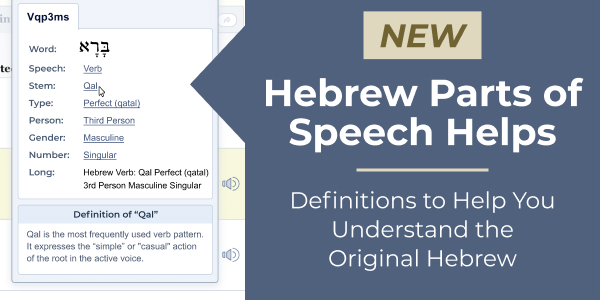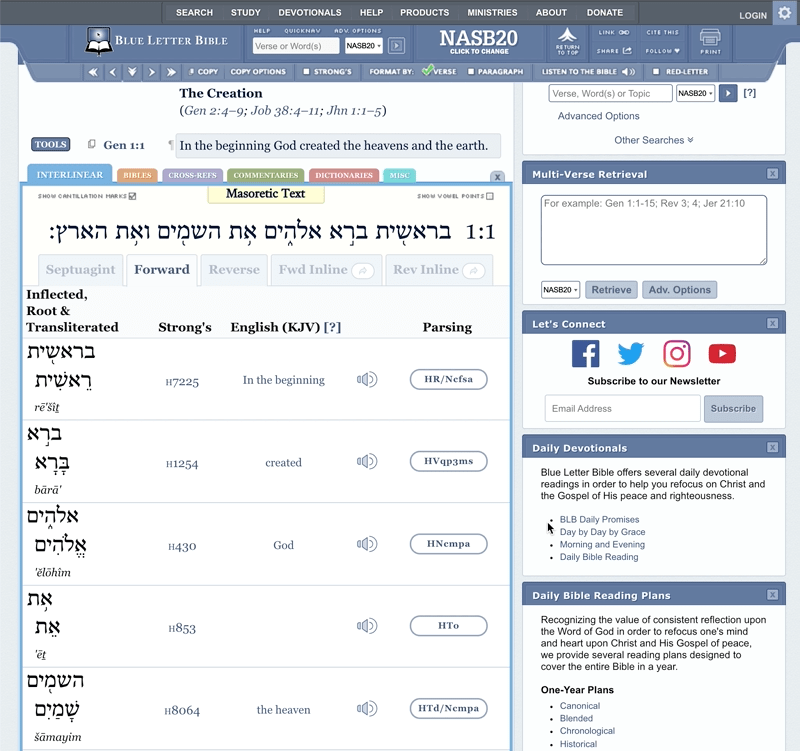
Helps and Explanations for Hebrew Parts of Speech
Our Interlinear tool matches the original Greek and Hebrew text with the English and provides critical information that helps you to understand each word. It is our most-extensively used resource. But one of the most complicated aspects of the tool is understanding the parsing (parts of speech) of each word. Very few of us understand what a Genitive case is in the Greek or a what a Qal stem is in the Hebrew, after all.
That is why we are excited to announce our new parsing definitions and explanations for the Hebrew language tools. We have offered these helps for quite some time in the Greek, so we are eager to include the same tools for the Old Testament Hebrew as well.
When you click on the parsing button for any Greek or Hebrew word, you will be greeted with a brand-new popup window. At the top, we show the data that you are used to, such as the Strong’s number, inflected and root forms, and the parsing code. Right below that, you will see each part of the word’s grammar, such as stem, type, and person.
For example, the word may contain a Qal stem. When you click on the word “Qal,” it will display a full definition of what “Qal” means. You will see that Qal “expresses the ‘simple’ or ‘casual’ action of the root in the active voice.” If you want to see all of this step-by-step in action, refer to the animation below or try it yourself!
